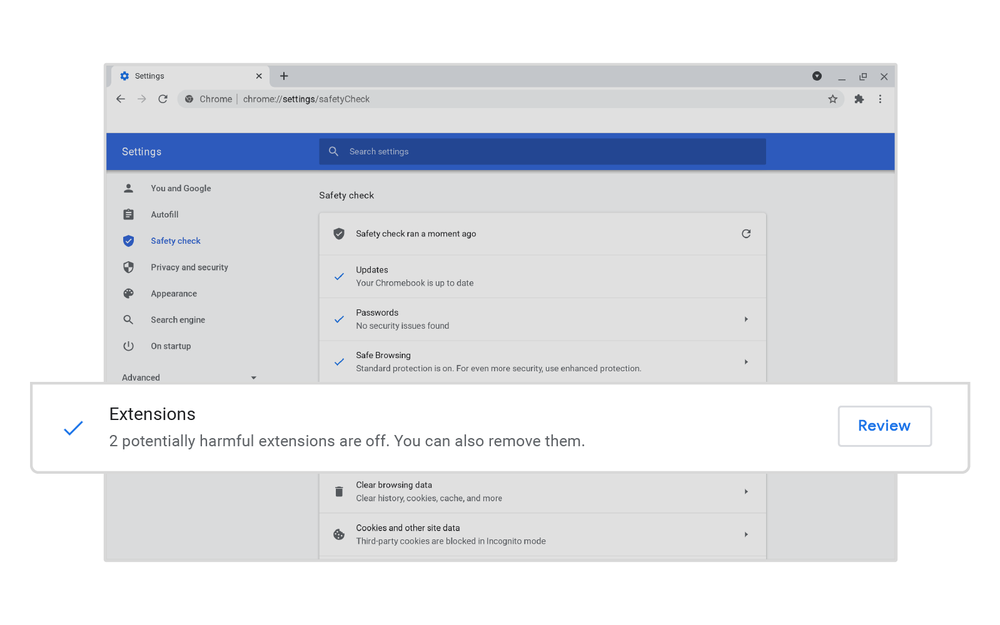

- CHROME PLUGINS SETTINGS NEW ADDRESS INSTALL
- CHROME PLUGINS SETTINGS NEW ADDRESS FULL
- CHROME PLUGINS SETTINGS NEW ADDRESS MAC
- CHROME PLUGINS SETTINGS NEW ADDRESS WINDOWS

CHROME PLUGINS SETTINGS NEW ADDRESS FULL
During GPO processing Domain policies are processed last and any key defined in a Domain GPO takes full precedence over the Local GPOs, which means that Registry keys defined in the same hive in competing GPOs do not merge values.
CHROME PLUGINS SETTINGS NEW ADDRESS WINDOWS
This is due to the policy processing order of Windows GPOs combined with Chromium policy behavior. We recommend that customers who are enforcing Chrome or Edge ExtensionInstallForcelist policies at the Domain GPO level also add the Extension for each browser to the Domain policy and that they be managed at the "Computer (Machine Hive)" level (not at the User level).
CHROME PLUGINS SETTINGS NEW ADDRESS INSTALL
On supported agent versions, the Edge Chromium policy entry is managed on-demand when the Edge (HTTPS) channel is enabled/disabled, and maintained at agent service startup.įrom version 15.5 and higher, you can choose to not install the Chrome extension by adding the INSTALLCHROMEPLUGIN=0 parameter to the installation command in the agent install_agent.bat file. In other words, a direct entry of 1, with no other LGPO entries will be overwritten by our extension at position 1. Directly created Registry entries within this same key (non-GPO / ExtensionInstallForceList) that have a colliding position value will be overwritten once the Group Policies processing occurs. Registry.pol) and increments our entry by the last string value + 1. To determine the position, the LGPO API enumerates those entries defined within LGPO only (i.e. The agent installer uses a Local Group Policy Windows API call to install/uninstall our Chrome browser extension into the LGPO at HKLM/Software/Policies/Google/Chrome/ExtensionInstallForceList. The Chrome policy entry is created during the agent installation. Placing the extension policies in the LGPO prevents users from permanently disabling the extension by removing the Registry entries since during Group Policy processing it will be reloaded into the registry from the registry.pol file. These extension policies are also added to the Local Group Policy - %windir%\System32\GroupPolicy\Machine\registry.pol. HKEY_LOCAL_MACHINE\SOFTWARE\Policies\Microsoft\Edge\ExtensionInstallForcelist These are added into the Registry at the following keys for the respective browsers:
:max_bytes(150000):strip_icc()/chromeprivacyandsecuritysettings-c87a9b3a2a1d4c6fa06f07924d803c26.jpg)
Registry Type/Data/Value (the value could change, depending on whether there are already any other local extension policies in place): The Symantec Extension registry value/data information is as follows: Chrome
CHROME PLUGINS SETTINGS NEW ADDRESS MAC
The extension is not installed until the respective browser is launched with the extension reference in place.įor Chrome extension on Mac see Creating an MDM configuration profile to support monitoring in Google Chrome on macOS endpoints. The URL is needed when processing policies to understand the destination and to report the URL on incidents. Google Chrome and Microsoft Edge Chromium utilize a browser extension to report the current tab's URL to the DLP Agent (via the Native Messaging Host - brkrprcs64.exe to edpa.exe).


 0 kommentar(er)
0 kommentar(er)
